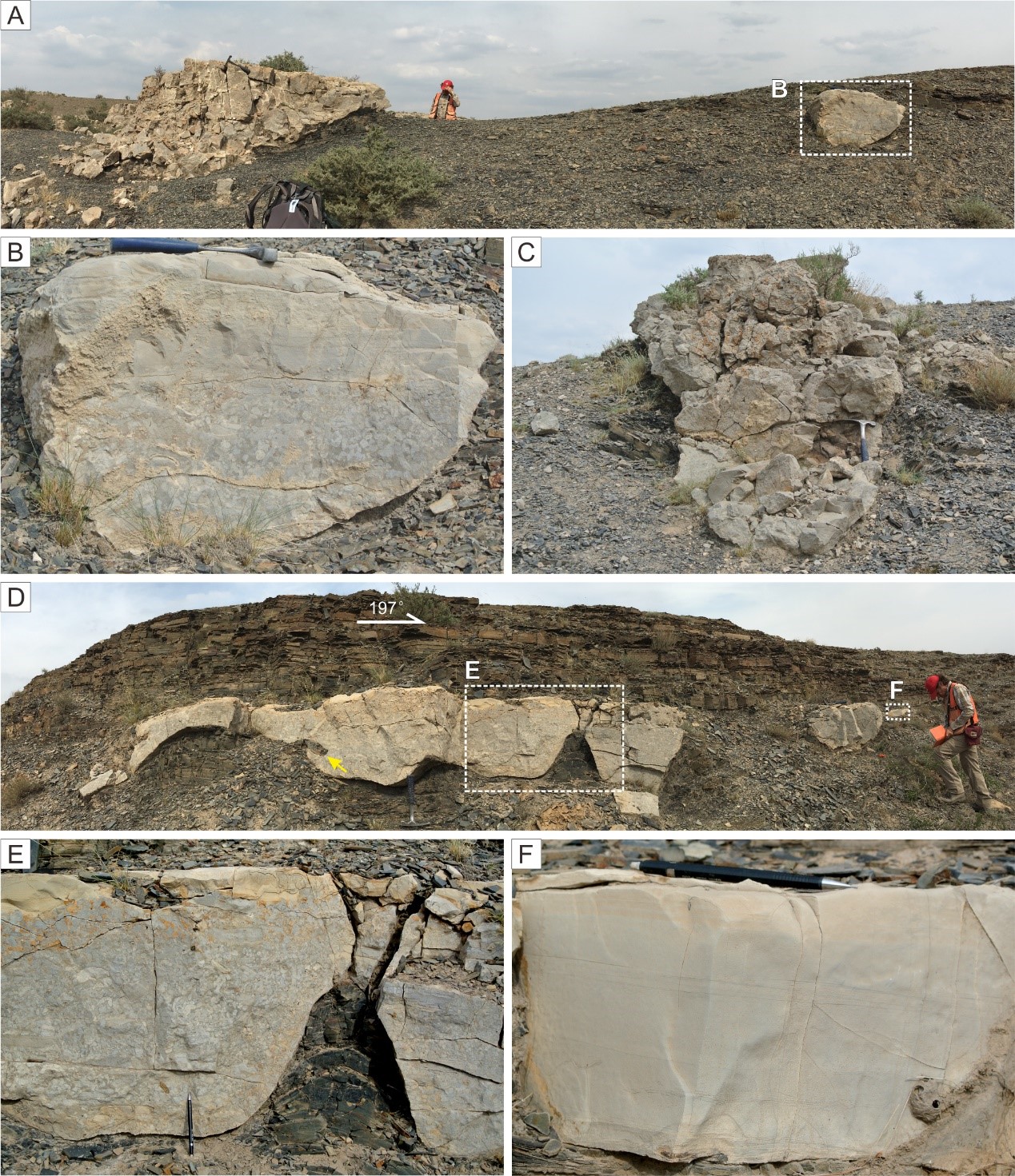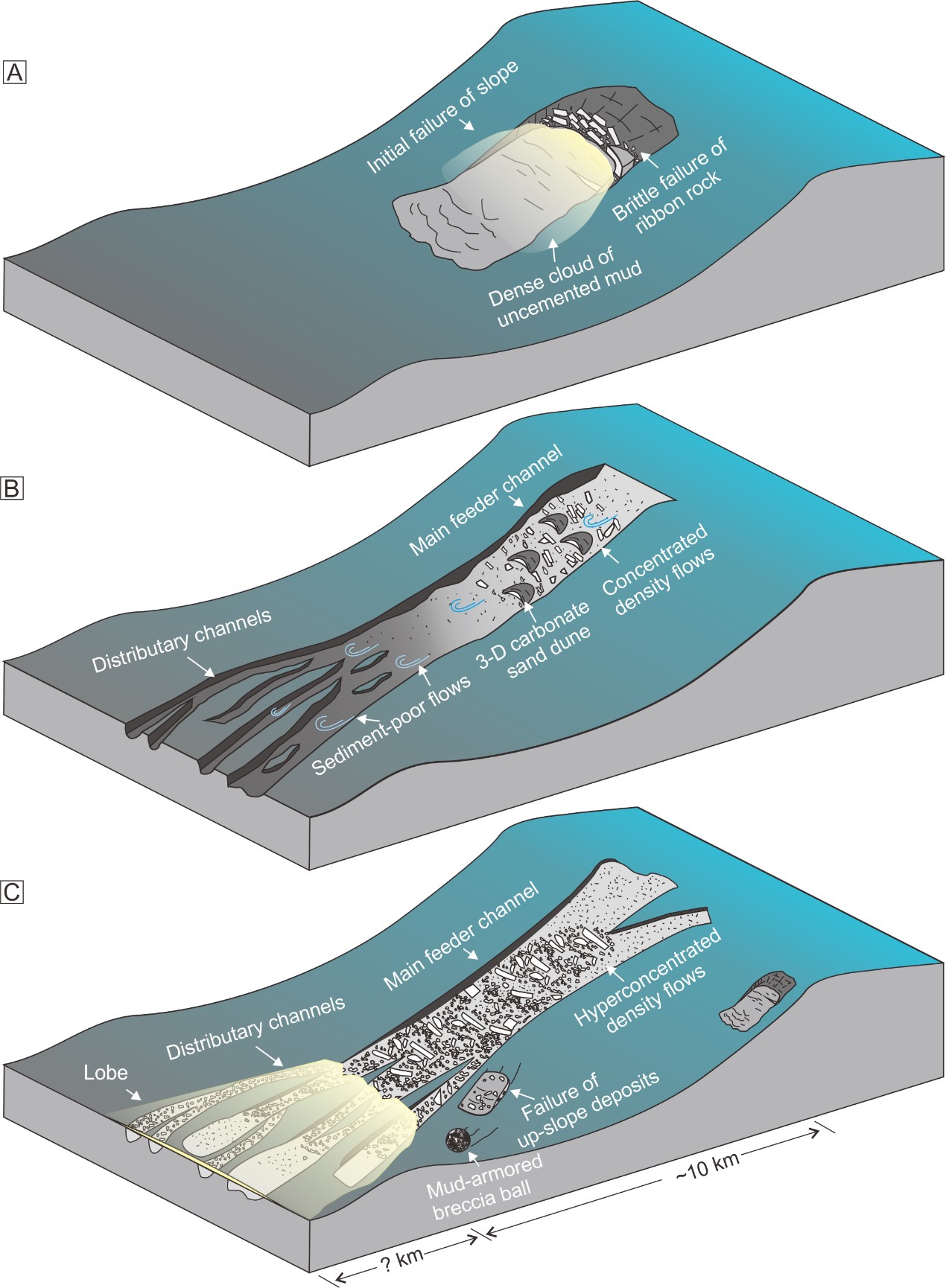Subaqueous mass-transport processes, including gravity-induced slides, slumps and debris flows, are one of the mechanisms for transport of sediment into the deep sea. They are of great significance because they shape the sea floor, record climatic and tectonic signals, represent potential catastrophic hazards for human activities and serve as hydrocarbon reservoirs. Systematic study of morphologies, textures and depositional structures in mass-transport deposits (MTDs), as well as associated sedimentary lithofacies, can also help to reveal aspects of tectonic evolution and sedimentary history of basins.
However, internal structures and depositional processes of carbonate MTDs are relatively poorly understood relative to siliciclastic facies due to their comparative paucity in the rock record. Moreover, it is also challenging to decipher the evolution and internal features of MTDs using remotely-sensed data and drill cores of modern deposits. Accordingly, outcrop-scale study on carbonate MTDs is one important work of sedimentologists.
During the last few years, Dr. LI Wenjie and Prof. CHEN Jitao from the Nanjing Institute of Geology and Palaeontology, Chinese Academy of Sciences (NIGPAS), and American cooperators worked in the Wuhai area, Inner Mongolia for several times. Multi-bedded carbonate MTDs from mid and late Darriwilian to early Sandbian are studied from the aspects of sedimentology and stratigraphy. The study is published in the international academic journal Sedimentology.
Researchers measured and described the Kelimoli and Wulalike formations of several sections at centimetre scale. The MTDs layers were described in detail. Hundreds of proxies of paleoslope orientation indicators have been measured. Line drawings were made in the field and laboratory to illustrate the soft-sediment deformation structures (SSDS). According to the data and field observation, they concluded the deformational succession of carbonate slump structures, and several unique sedimentary models of carbonate mass flow. Tectonic events related to passive to foreland basin transitions, and associated platform foundering and steepening of the slope were proposed to be the trigger mechanism of the deposition of these MTDs.
Their findings improved the understanding of transport mechanisms of carbonate MTDs and provided a template for predicting deformational trends of other ancient carbonate slope mass movements. Their stratigraphic and facies model may be applicable to the tectonic history of sedimentary basin analysis and unconventional hydrocarbon resource (such as shale gas) exploration of the western margin of North China.
This research was supported by the Strategic Priority Research Program (B) of Chinese Academy of Sciences and National Science Foundation of U.S.
Reference: Li, W. J., Chen, J. T.*, Hakim, A. J., Myrow, P. M., 2021. Middle Ordovician mass-transport deposits from western Inner Mongolia, China: Mechanisms and implications for basin evolution. Sedimentology. https://doi.org/10.1111/sed.12949.

Fig. 1 Imbricated beds and folds of the Kelimoli Formation at the Xilaifeng section

Fig. 2 Breccia-filled channels of the Wulalike Formation at the Yixiantian section

Fig. 3 Facies model of coarse-grained calciclastic submarine channels formed in steep siliciclastic slope settings.
Contact:
LIU Yun, Propagandist
Email: yunliu@nigpas.ac.cn
Nanjing Institute of Geology and Palaeontology, Chinese Academy of Sciences
Nanjing, Jiangsu 210008, China
Download:
